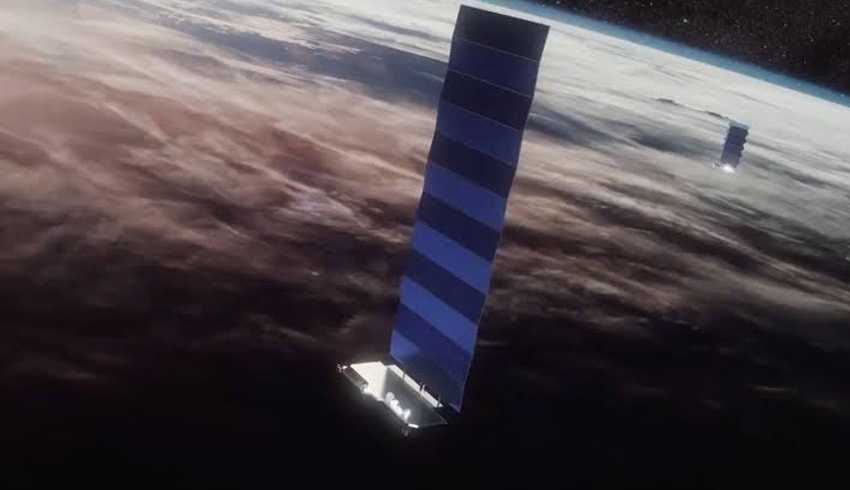One of the next batch of 60 Starlink satellites to be launched will feature a non-reflective coating to make it less visible from the ground and therefore less likely to interfere with astronomical viewing.
“We are going to get it done,” said SpaceX president and chief operating officer Gwynne Shotwell in a meeting with reporters at the SpaceX headquarters in Hawthorne, California.
“We want to make sure we do the right thing to make sure little kids can look through their telescope. Astronomy is one of the few things that gets little kids excited about space.”
US businessman Elon Musk’s SpaceX launched the first batch of 60 Starlink satellites on a single rocket on 23 May and very soon after, astronomers noticed the procession of small satellites as they dispersed to their assigned orbits.
A second group of 60 was launched in November.
They’re now in higher orbits and less visible. However, Musk’s vision is for a constellation of up to 12,000 small communications satellites and he’s not the only one.
Others are also planning constellations of small satellites, providing a range of services including communications, internet access and Earth observation.
Astronomers said this proliferation of small bright satellites in low-Earth orbit will end astronomical observation. Radio astronomers are equally unhappy as the new satellites will all emit radio signals drowning out the weak radio signals from distant stars and galaxies.
Shotwell said the next batch of Starlink satellites to be launched would include one satellite with a non-reflective coating on its Earth facing side.
This is intended as an initial experiment.
“We’re [doing] trial and error to figure out the best way to get this done,” she said.
Shotwell said it was cool for people to look through their telescopes and see a Starlink satellite.
But if they were looking at Saturn they would not want to be interrupted.
Shotwell said SpaceX planned to launch batches of 60 satellites every two to three weeks over the next year to build the constellation so that by the middle of next year it would be ready to provide global internet coverage.
She said no one thought of the problem the small satellites would create.
“We didn’t think of it. The astronomy community didn’t think of it,” she said.

